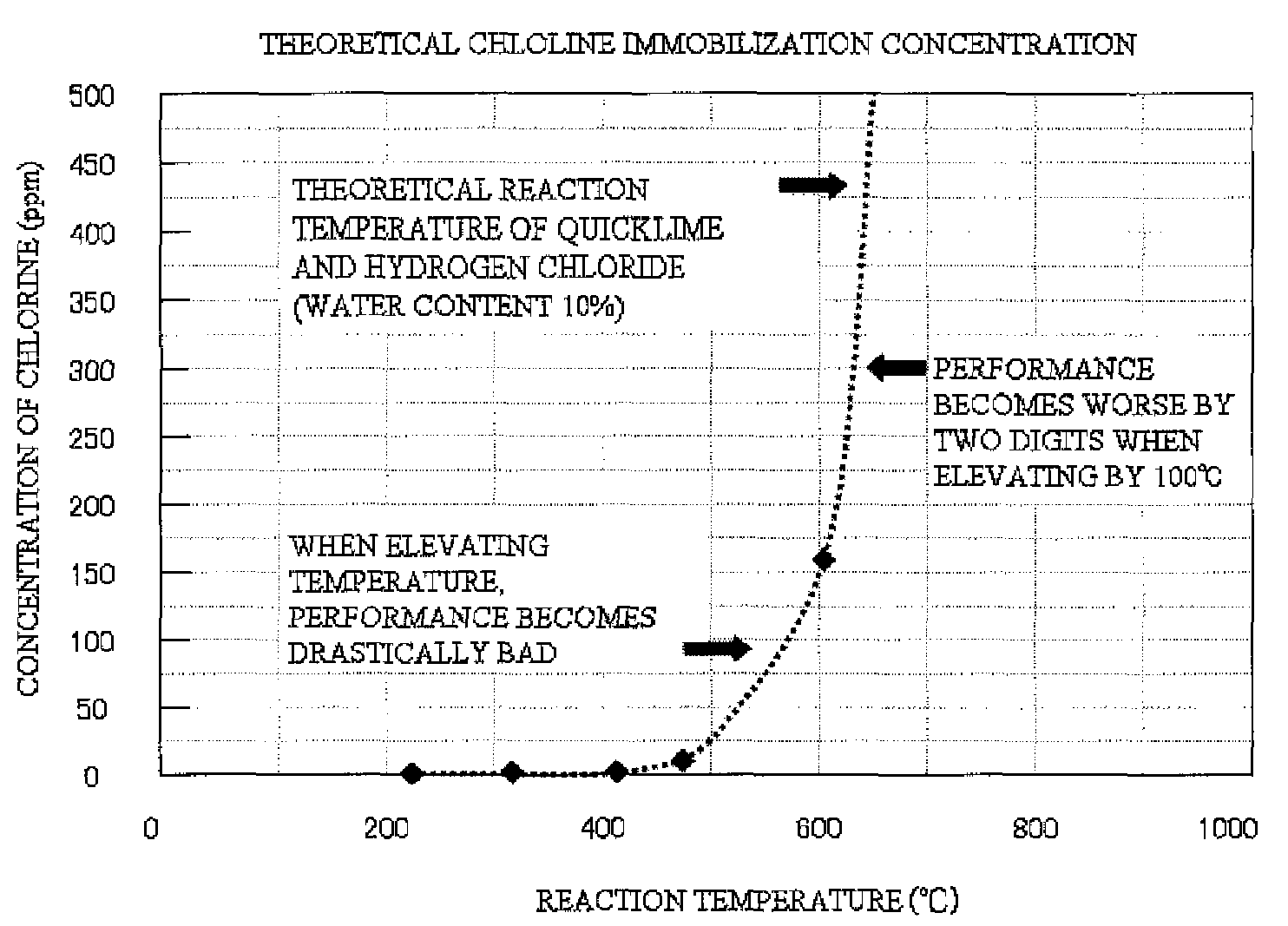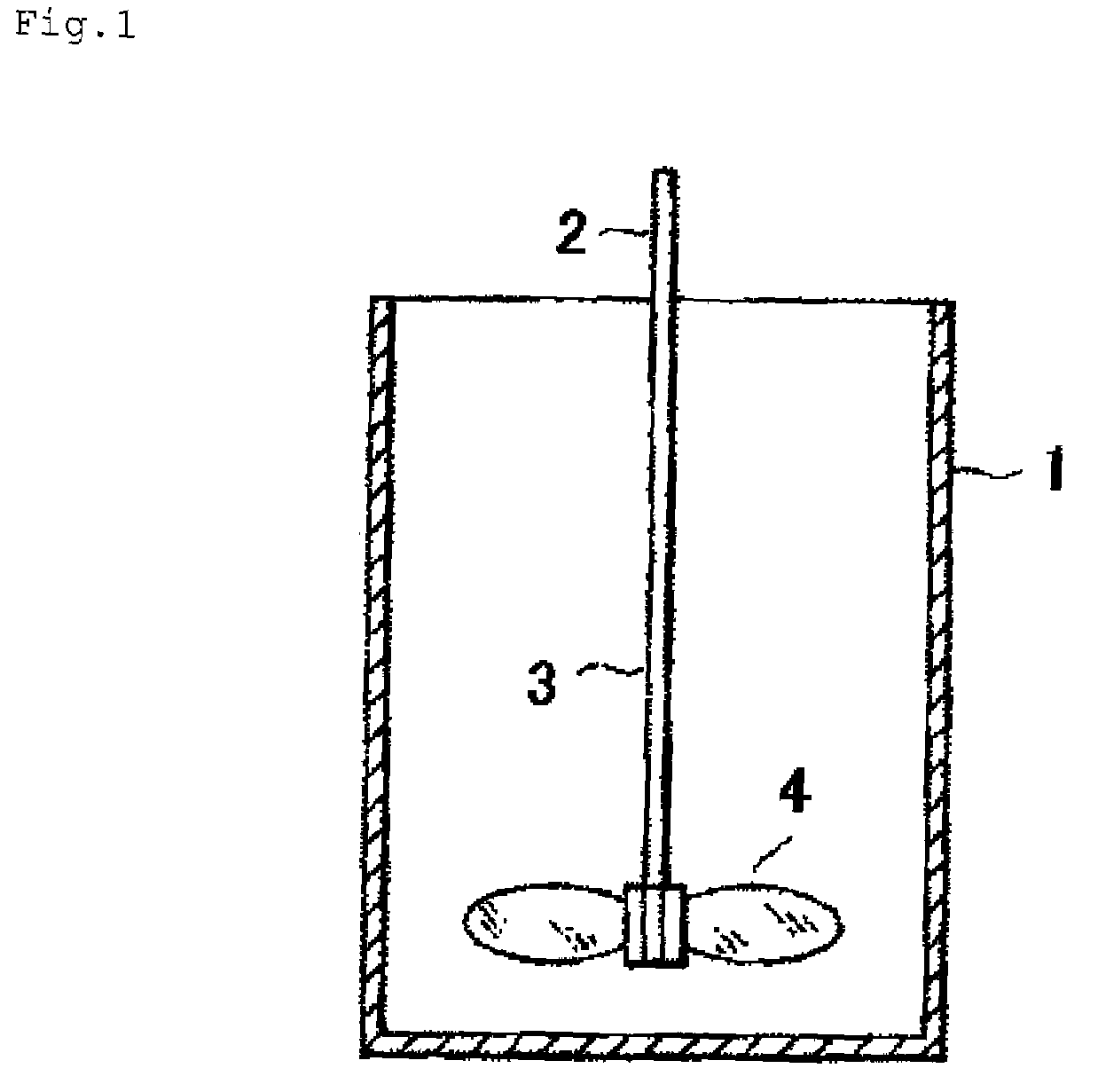Decomposition method of waste plastics and organics
a technology of decomposition treatment and waste plastics, applied in the field of decomposition treatment of waste plastics and organics, can solve the problems of large equipment, large treatment cost, waste plastics cannot be efficiently decomposed,
- Summary
- Abstract
- Description
- Claims
- Application Information
AI Technical Summary
Benefits of technology
Problems solved by technology
Method used
Image
Examples
example 1
Study of Heating Temperature
[0112]The optimum heating temperature for the catalyst composed of the titanium oxide granules and the waste plastics was studied. Conditions are as follows:[0113]1. Experimental device (reactor): Agitation type decomposition experimental machine (2200 mL)[0114]2. Air flow to be introduced: 50 L / min[0115]3. Inside temperature of reactor: 300° C., 320° C., 350° C., 380° C., 400° C., 420° C., 450° C., 480° C., 500° C., 530° C., 550° C., 560° C., 570° C., 580° C., 600° C.[0116]4. Used catalyst: 700 g of titanium oxide catalyst (SSP-G Lot. 051108 available from SAKAI CHEMICAL INDUSTRY Co., Ltd.)[0117]5. Waste plastics: Polyethylene pellets 1 g / one charge
[0118]For measurement of a gas concentration (NOx, CO, CO2, O2, CH4), a gas concentration continuous measuring device PG-250 (manufacture: HORIBA, Ltd.) was used.
[0119]The waste plastic was decomposition-treated at the above temperature. The results are shown in FIG. 7.
[0120]The waste plastic was not able to d...
example 2
Determination of Dioxin Generated During the Processes of the Decomposition Method According to the Present Invention
[0136]An amount of dioxin generated during the processes of the decomposition method according to the present invention was determined. The used plastic was a waste plastic containing 20% polyvinylchloride that generates a large amount of dioxin and hydrogen chloride by burning.
[0137]The measuring conditions were as follows:[0138]1. Decomposition apparatus: 100 kg titanium oxide agitation type decomposition apparatus[0139]2. Used catalyst: 100 kg of titanium oxide catalyst (SSP-G Lot. 050323 available from SAKAI CHEMICAL INDUSTRY Co., Ltd.)[0140]3. Kind and amount of used plastic: Mixture of polyvinylchloride and polyethylene (20:80% by weight), 117 g / min[0141]4. Heating temperature of titanium oxide granules: 480° C.[0142]5. Air flow to be introduced: 3.9 m3 / min[0143]6. Lime neutralization treatment process[0144]7. Oxidation catalyst treatment process
[0145]The concen...
example 3
Study of Specific Surface Area of Catalyst Composed of Titanium Oxide Granules
[0148]The optimum specific surface area of catalyst composed of titanium oxide granules was studied.
[0149]Conditions are as follows:[0150]1. Experimental device (reactor): Agitation type decomposition experimental machine[0151]2. Heating method: Air-introducing heating system[0152]3. Air flow to be introduced: 50 L / min[0153]4. Inside temperature of reactor: 480° C.[0154]5. Agitation speed: 35 rpm[0155]6. Used catalyst: 700 g of titanium oxide catalyst (SSP-G Lot. 051108 available from SAKAI CHEMICAL INDUSTRY Co., Ltd.)[0156]7. Waste plastic: Polyethylene 1 g / min charge[0157]8. Specific surface area of catalyst composed of titanium oxide granules: 30 m2 / g, 40 m2 / g, 70 m2 / g[0158](1) Titanium oxide granules having specific surface area of 30 m2 / g and a micropore volume of 0.20 cc / g
[0159]The polyethylene of waste plastic was charged to the titanium oxide granules in the reactor. Just after the charge, the wast...
PUM
| Property | Measurement | Unit |
|---|---|---|
| temperature | aaaaa | aaaaa |
| size | aaaaa | aaaaa |
| specific surface area | aaaaa | aaaaa |
Abstract
Description
Claims
Application Information
 Login to View More
Login to View More - R&D
- Intellectual Property
- Life Sciences
- Materials
- Tech Scout
- Unparalleled Data Quality
- Higher Quality Content
- 60% Fewer Hallucinations
Browse by: Latest US Patents, China's latest patents, Technical Efficacy Thesaurus, Application Domain, Technology Topic, Popular Technical Reports.
© 2025 PatSnap. All rights reserved.Legal|Privacy policy|Modern Slavery Act Transparency Statement|Sitemap|About US| Contact US: help@patsnap.com



